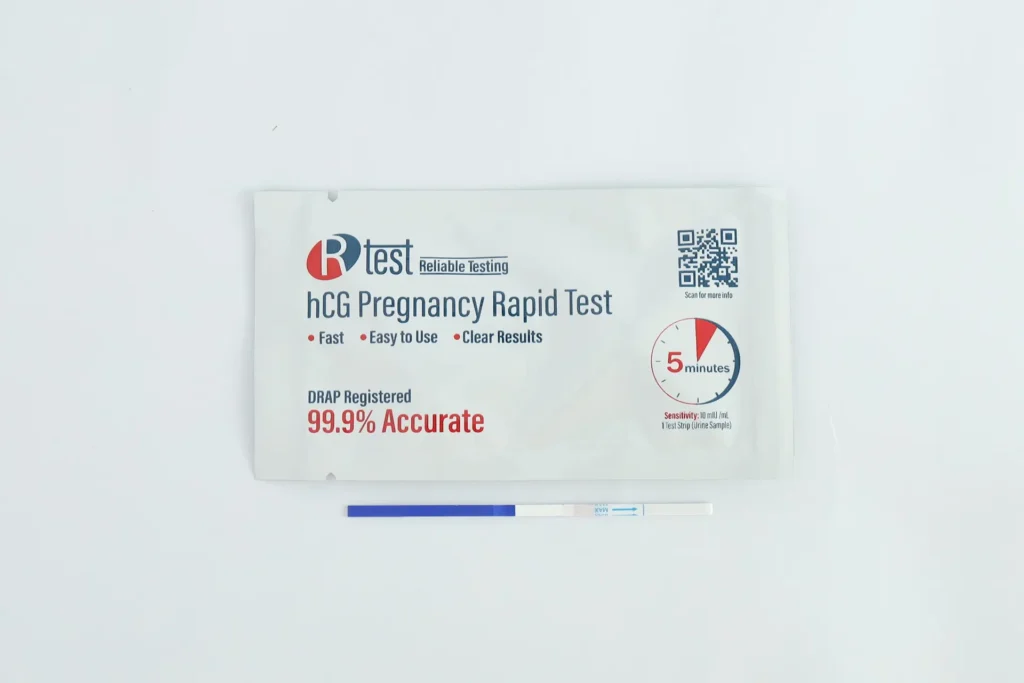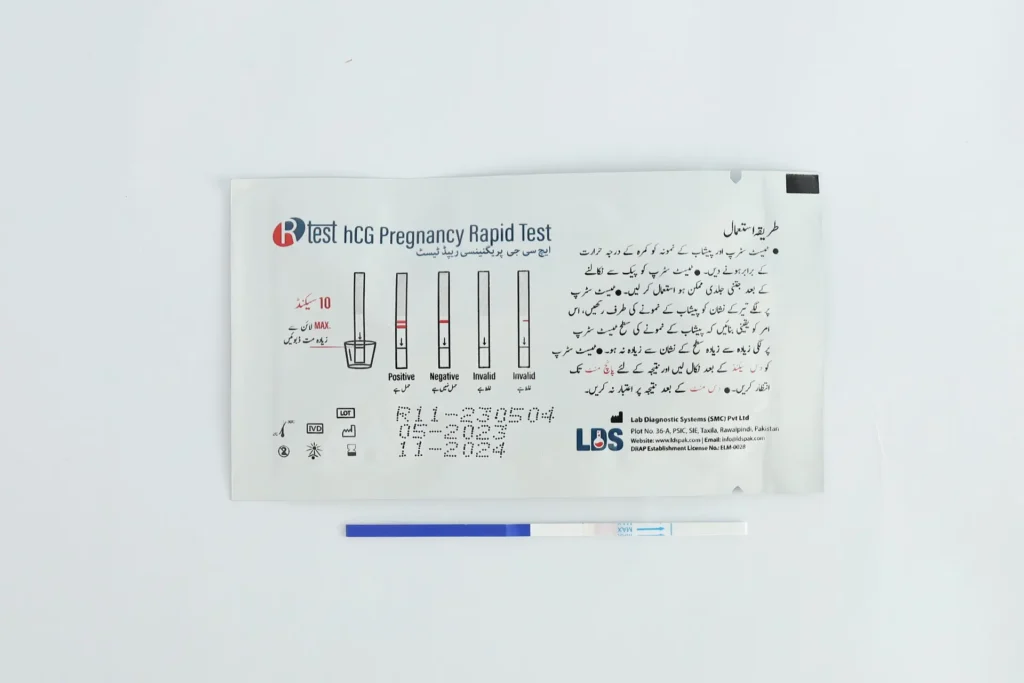Are You Using Pregnancy Test Strips Wrong? 7 Shocking Mistakes to Avoid
Home pregnancy test strips have become an essential tool for women seeking to confirm a pregnancy quickly and privately. With just a few drops of urine, these tests can detect a pregnancy hormone known as hCG, providing answers within minutes. However, the accuracy of these results depends heavily on how the test is used.
A surprising number of people make common errors when using pregnancy test strips, leading to confusion, false hopes, or unnecessary worry. In this article, we’ll explore seven critical mistakes that could be skewing your results, explain how to use pregnancy tests the right way, and provide expert advice to guide you through this emotional journey.

1. Understanding How Pregnancy Test Strips Work
Pregnancy tests work by detecting the hormone human chorionic gonadotropin (hCG), which is produced after a fertilized egg attaches to the uterus. Levels of hCG rise rapidly in early pregnancy and are most concentrated in the urine during the first morning hours.
There are different types of home pregnancy tests:
- Test strips: The most affordable and basic option, requiring the user to dip the strip into a urine sample.
- Midstream tests: More convenient, these are held directly in the urine stream.
- Digital tests: Provide clear “Pregnant” or “Not Pregnant” results but are more expensive.
Test sensitivity matters. Some detect as low as 10 mIU/mL of hCG, while others may need 25–50 mIU/mL. Understanding your test’s sensitivity can help you time the test accurately.
2. Mistake #1: Testing Too Early
It’s tempting to take a test just days after unprotected sex, but this often leads to a false negative. Most pregnancy tests are not sensitive enough to detect hCG until at least 10–14 days post-ovulation or the day of your missed period.
Why early testing can backfire:
- Implantation timing varies, meaning hCG levels might not be detectable yet.
- A negative result can cause unnecessary disappointment.
Best practice: Wait until at least one week after a missed period for the most reliable result.
3. Mistake #2: Not Following Instructions Properly
Every pregnancy test comes with an instruction leaflet, and ignoring it is one of the biggest mistakes people make. Brands may vary in how long to dip the strip, how much urine is needed, and how long to wait for the result.
Common user errors:
- Not using a timer to read results accurately.
- Dipping the strip too long or not long enough.
- Using an insufficient amount of urine.
Solution: Read the instructions carefully—every time, even if you’ve used the same brand before.

4. Mistake #3: Misinterpreting the Results
Lines can be tricky. A faint line might be a real positive or just an evaporation line. Misinterpretation can lead to false assumptions.
Here’s what the lines usually mean:
- One line: Negative.
- Two lines: Positive.
- Faint second line: Often positive, but retest in a day or two.
- No lines: Invalid test.
Evaporation lines show up after the recommended wait time and are colorless or gray. Always read the result within the time window (usually 3–5 minutes).
5. Mistake #4: Using Diluted Urine
Your first-morning urine is most concentrated and gives the best chance for accurate detection of hCG.
Problems with diluted samples:
- Drinking too much water before testing lowers hCG concentration.
- Evening urine might not contain enough hormone.
Tip: If morning testing isn’t possible, limit fluid intake for a few hours before testing.
6. Mistake #5: Reusing or Touching the Strip Incorrectly
Pregnancy test strips are single-use only. Reusing them or touching the reactive part can interfere with the chemical reaction.
Common handling mistakes:
- Touching the test zone with fingers.
- Holding the strip upside down.
- Dipping the strip beyond the max line.
Correct usage: Hold the strip by the handle, dip it in urine up to the marked line, and lay it flat while waiting.
7. Mistake #6: Using Expired or Poorly Stored Tests
Test strips have an expiration date. Over time, the chemicals degrade, making results unreliable.
How storage affects results:
- Moisture and heat can damage the strip.
- Tests stored in bathrooms or hot climates are especially vulnerable.
Tip: Keep tests in a cool, dry place and check the expiry before use.
8. Mistake #7: Ignoring Medical Conditions and Medications
Some health conditions and medications can cause false positives or negatives.
Conditions that may affect hCG:
- PCOS (Polycystic Ovary Syndrome)
- Menopause
- Recent miscarriage or abortion
Medications to watch:
- Fertility drugs containing hCG
- Some anti-anxiety and antipsychotic meds
When in doubt, consult a doctor for blood testing or further evaluation.
9. When Is the Best Time to Take a Pregnancy Test?
- Morning urine is most reliable.
- 7–10 days after ovulation is ideal.
- Use an ovulation tracker or calendar app to better estimate timing.
10. Understanding False Positives and False Negatives
False Positives Can Be Caused By:
- Chemical pregnancies
- Fertility treatments
- Evaporation lines
False Negatives May Happen When:
- Testing too early
- Diluted urine
- Faulty test
If in doubt, repeat the test or visit your doctor for a blood test.
11. Choosing the Right Pregnancy Test for You
- High-sensitivity brands: First Response, Clearblue Digital
- Budget brands: ClinicalGuard, Easy@Home
- Best for clarity: Digital tests
Strip vs. Digital:
- Strips are cheaper and reliable with proper use.
- Digital tests reduce interpretation errors but cost more.
12. Can You Take a Pregnancy Test at Any Time of Day?
Technically yes, but morning is best due to hCG concentration.
If testing later in the day:
- Don’t drink too much fluid beforehand.
- Use a 3–4 hour urine hold.
13. Tips for Using Pregnancy Strips Correctly
Step-by-step guide:
- Use a clean container for urine.
- Dip the strip for 5–10 seconds (follow brand directions).
- Lay flat on a dry surface.
- Read results within 3–5 minutes.
Hygiene tip: Wash hands before and after testing.
14. What to Do After a Positive Result
First steps:
- Confirm with a second test or a blood test.
- Book your prenatal appointment.
- Begin prenatal vitamins if not already taking them.
Emotional support: Talk to a partner, trusted friend, or support group.
15. What to Do After a Negative Result
- Wait and retest in 2–3 days if no period.
- Consider cycle tracking apps to predict ovulation better.
- If your period is late for more than two weeks, see a doctor.
16. Emotional Impact of Testing
Taking a pregnancy test can be emotional—whether you’re hoping for a positive or fearing it.
Tips to manage feelings:
- Try to stay calm and patient.
- Talk to someone you trust.
- Take breaks from testing if it becomes overwhelming.
17. How Accurate Are Home Pregnancy Tests?
Most claim 99% accuracy, but real-world reliability is closer to 75–85% depending on:
- Usage timing
- Sensitivity
- User error
For more accurate results, confirm with a blood test.
18. Real-Life Stories: Users Who Got It Wrong
Story 1: “I tested 3 days early and got a negative. Two days later, I had a strong positive!” – Aisha
Lesson: Timing is everything.
Story 2: “I thought I saw a faint line, but it was an evap line I read after 10 minutes.” – Mariah
Lesson: Always follow the time instructions.
19. Expert Advice: Gynecologists Weigh In
Dr. Sana Malik, OB-GYN:
“Early testing often leads to anxiety. Wait until your period is late and test first thing in the morning.”
Dr. Faraz Hussain:
“False positives can be caused by recent miscarriages or fertility meds. Always follow up with a doctor.”
20. The Future of Pregnancy Testing
- Bluetooth-enabled digital tests
- App integration to track cycles and results
- AI-powered fertility monitors
Soon, pregnancy testing may be as simple as asking your phone.
Frequently Asked Questions (FAQs)
Q: Can a faint line still mean I’m pregnant?
A: Yes, especially if seen within the test window.
Q: How soon after sex can I test?
A: Wait 10–14 days for accurate results.
Q: What are evaporation lines?
A: Colorless lines that appear after the test dries. Ignore results after the time limit.
Q: Is a false positive possible?
A: Yes, due to meds or health issues.
Q: Should I take multiple tests?
A: Yes, testing 2–3 days apart can help confirm results.
Q: Can food or drinks affect my result?
A: No, but excessive fluids can dilute your urine.
Q: Why does the result change after a few hours?
A: It’s likely an evaporation line—not a true result.
Q: Can medications affect results?
A: Yes, especially fertility drugs with hCG.
Q: Is it okay to use an expired test?
A: No. Expired tests are unreliable.
Q: How do I know I did the test right?
A: Follow the instructions precisely. If unsure, retest or consult a doctor.